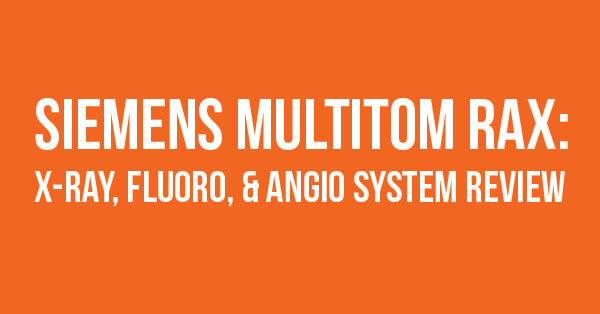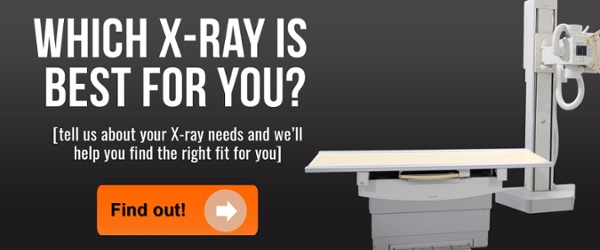
Fully digital, wireless, automated. Do you ever catch yourself asking: "Where does X-ray imaging go from here?" Whether you've thought of a good answer yet or not, pushing the boundaries to develop the next idea, innovation, system, or workflow is essential to providing patient care with excellence.
Siemens offers their vision of the next big idea in digital X-ray with the modality-blending Multitom RAX. Keep reading to learn more about how the RAX works and what it can do for your patients.
What Is the Siemens Multitom RAX?
Let's start with a little history. Prior to the release of this system by Siemens, the latest and greatest X-ray rooms on the market were the GE 656 and Siemens Ysio. These native digital systems are fully automated and entirely programmable; "Cadillacs" as we like to call them around here at Block. Their only limitation? They only perform digital X-ray studies.
The new Multitom RAX pushes the boundaries of imaging by combining multiple modalities, digital X-ray, fluoroscopy, and angiography, into one room.
How Does the Multitom RAX Work?
RAX stands for Robotic Advanced X-ray. The future of medical imaging (and a lot of other fields) is automated. This unit uses two highly articulated robotic arms to capture images on a static table. One arm positions the X-ray source, while the other positions the detector.
How Does This Help My Patients?
My favorite question: "So what?" Let's walk through a few of the benefits the RAX offers.
Study Types
The combined flexibility of the two robotic arms, along with fluoro and angio software features and a cath lab-quality dynamic detector, opens up the range of studies that the RAX can acquire. On top of these capabilities, the core functionality, static X-ray, will have the latest digital technology and carry a high degree of detail.
Minimized Patient Movement
The Multitom RAX has the widest range of motion of any X-ray room on the market. With this new technology, imaging patients requires little to no movement of the table or the patient's body.
Real 3D
With a free range of motion all the way around the table real 3D images are achievable, creating a tomographic view of bone or tissue. This is the real kicker: creating 3D renderings will not only streamline your workflow, it can also free up your CT for more advanced studies you might need to do. The Multitom RAX is a team player.
How Does This Help My Bottom Line?
As new as the unit is and as advanced as its features are, the RAX is sure to constitute a huge capital outlay. Still, in the right setting, combining three or four modalities in one room can benefit your facility and drive ROI in several ways.
- Eliminate capital purchases
- Eliminate service contract purchases
- Save two or three rooms worth of space
- Increase efficiency and patient volume
Limitations
We've talked the RAX up quite a bit thus far so, in the interest of fairness, we should discuss its limitations.
Remodeling
Having two ceiling-mounted, robotic X-ray arms requires very specific ceiling and room construction to accommodate the footprint and weight of the system. If you are familiar with R/F room projects, we suspect construction costs to be in a similar price range.
Placement
Because they are somewhat niche, not many of these units have been placed since their inception in 2016. Hearing about the ownership experience and hands-on field use of this system from techs and administrators has not quite hit the streets yet.
Cost
Presently, Siemens is the only company that provides this solution or anything like it. As such, they are keeping it close to the vest. However, from what we know about cath labs and new R/F rooms, we can expect this unit to run between $500,000 - $900,000.
With systems this new, it is hard to say when this unit will enter the secondary market and become more affordable. If previous generations of technology are any indication, it will be four to seven years.
The Takeaway
While it may take several years for the Multitom RAX to become more attainable for small facilities and start-ups, it will bring considerable benefits with it when it does. This model is one to keep your eye on, because once systems begin to trickle onto the secondary market, they will move fast.
The advantages of the Multitom RAX make it a desirable system, but not to the exclusion of more affordable options. If you need a new X-ray solution sooner, our team would love to walk you through the range of late-model, refurbished equipment that is available now.

Tony Baggett
Tony Baggett is an X-Ray Product Manager at Block Imaging. Tony assists imaging centers, hospitals, and orthopedic centers in their purchases of x-ray equipment. When he’s not serving customers, Tony can be found hunting, fishing, and camping with his wife, son, and daughter.






